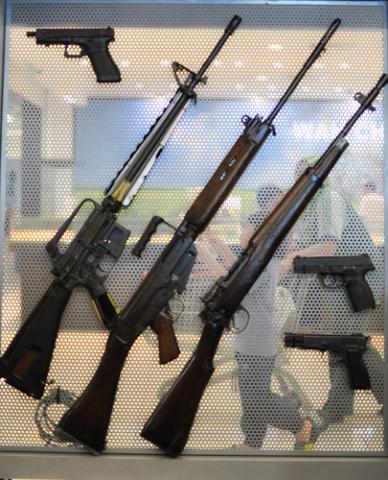
In a gun magazine advertisement, a militia member, tricked out in copies of army “tactical” gear hefts an assault rifle with a 30 round magazine and strides forward above the text “…Whatever your mission.” Today, ads for military rifles and self-defense pistols have intensified, aimed at civilians with images of combat situations combined with text promising deadly capabilities.
During the history of American firearms, muskets, rifles and shotguns won our independence, defended our lives and property, and put meat on our table. They accompanied our westward migration in saddle scabbards and wagon beds. Whole families learned to shoot as a matter of survival in the 18th century and, as civilization and population growth caused social pressures, the civilian market for firearms shifted from tools and sport to weapons.
When armies and militias in the early 19th century required more mobility and greater volume of firepower, the repeating rifle and the revolver became the cash cow of firearms marketing. Multishot breechloader carbines and rifles from Sharps, Burnside, Spencer and Winchester joined Colt and Remington revolvers in the great land armies of the Civil War. Spencer, the first successful breech loading repeater, fired seven .52 caliber cartridges. Confederates called it, “That Yankee rifle you load on Sunday and shoot all week.”
At the end of the war, millions of combat weapons found their way into civilian hands as the West opened up to settlers, speculators and the railroad. With the military downsized, gun marketing followed the westward migration with combat-proven, rapid fire weapons. The revolver and shotgun were touted as necessary for self defense in rough cow towns and the lawless expanses of the prairie. Actually, most cow towns and villages had tougher gun laws than we have today. Some of the large cattle ranches forbade their cowpokes from owning a revolver while on the trail, and many of the firearms displayed in period photographs of “tough waddies on the prod” are the photographer’s props. But the romantic six-gun myth grew.
World War I rekindled military arms development on a grand scale. The Thompson Submachine Gun, designed for fighting in France, arrived too late for the war. Instead, it was marketed to ranch owners for cutting down pesky cattle rustlers. This was the first automatic-fire battle weapon to find a civilian demand during Prohibition. Murders on the city streets helped fuel a firearms frenzy and even National Geographic Magazine carried ads for Colt handguns, “…to defend your hearth and home.” Throughout the Great Depression, Tommy Guns and six guns flashed and boomed in the hands of motor bandits and peace officers across the country.
Following World War II, the shooting sport market was flat. None of the conventional war weapons: the M1 rifle, carbine and automatic pistol were suited to civilian use. The Armalite all metal and plastic AR-15 rifle arrived in time for the Vietnam War. Essentially, it is three metal tubes machined from bar stock. This “assault rifle” became a cheap-to-build platform for a variety of military weapons from the M-16 to the current H&K416 Seal Team rifle system. Even with reduced firepower, it promises high capacity, deadly combat capabilities to any civilian shooter…”whatever your mission.”
Real or imagined, this aggressive mindset has helped polarize the general public’s firearm attitudes and acceptance of sport shooting traditions.

Leave Your Comments